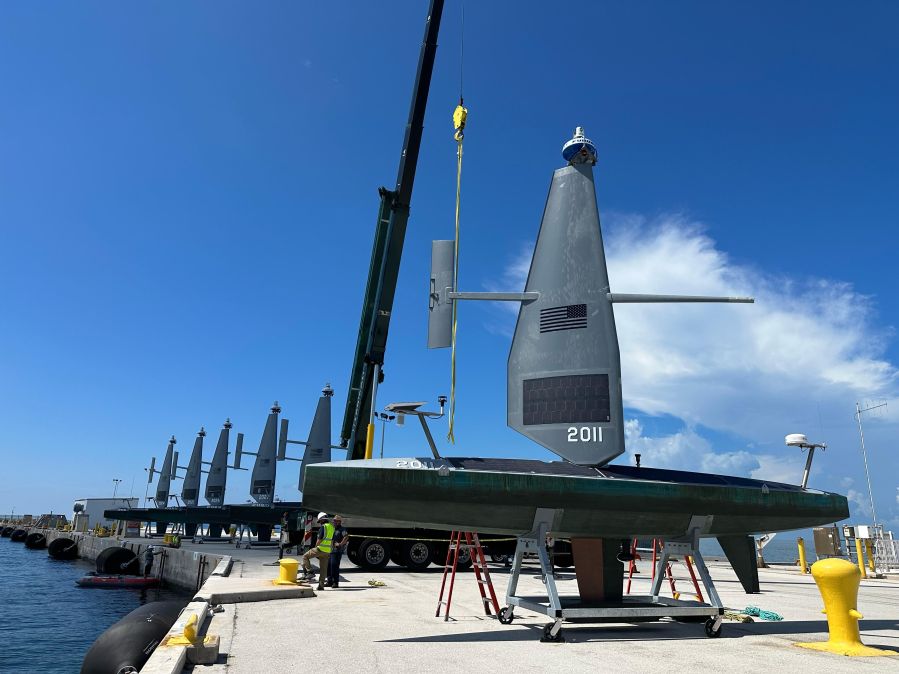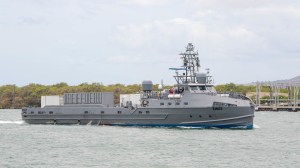Navy’s 4th Fleet sets sights on command center upgrades for drone ops

The Navy’s experimentations with robotic systems in Central and South America have revealed capability gaps in the service’s ability to manage drone operations at command centers and work with large swaths of data, according to a top officer.
In 2023, the service’s 4th Fleet — assigned to the U.S. Southern Command area of responsibility — kicked off a series of experimentations aimed at integrating unmanned aerial vehicles, surface ships and subsurface vessels with manned platforms.
Less than a year into the effort, 4th Fleet Commander Rear Adm. Jim Aiken said the Navy needs better tools at command centers in order to operate the uncrewed systems, and the service will begin scouting for upgrades this year.
“One of the things that we learned is — most of the time we thought that this unmanned fleet was going to be all about robots, because in your mind when you think unmanned fleet you’re thinking of unmanned surface, air and subsurface,” Aiken said Thursday during a panel at the Surface Navy Association’s annual symposium. “We realized that one of our biggest challenges was at the headquarters. We have the robots and we’re making lots of progress there, but in terms of what we have at the headquarters and how we actually manage the command for it [and] how we manage that data — it’s overwhelming.”
A key issue is the vast amount of information gathered during operations. Aiken said that in an average week, operators at 4th Fleet have to manually comb through an average of 2 terabytes of data and find the most relevant information.
“We really have to use [artificial intelligence] tools to figure it out and inform the watchstanders and the warfighters,” he noted.
Much like the Navy’s unmanned task force operating in the Middle East under U.S. Central Command known as Task Force 59, 4th Fleet’s goal is to advance the Navy’s journey towards a “hybrid fleet” of manned and unmanned platforms that will bolster maritime domain awareness and overall operations.
However, while Task Force 59 focuses on broadly experimenting with commercially available autonomous technologies, work in 4th Fleet steers its efforts toward more closely integrating uncrewed capabilities into traditional organizational structures and day-to-day operations.
In addition to command modernizations this year, 4th Fleet will also look to improve integration of robotic systems across the air, sea and undersea domains, Aiken added. It plans to take systems to the eastern Pacific region to help with counter-drug and illegal fishing missions, as well as begin a collaboration with the Office of Naval Research on development projects.
“I think the biggest thing that we want to be is an organization of learning, and then also an organization of collaboration,” Aiken said. “There’s opportunities for us to share information, to learn from each other and to continue to grow.”






